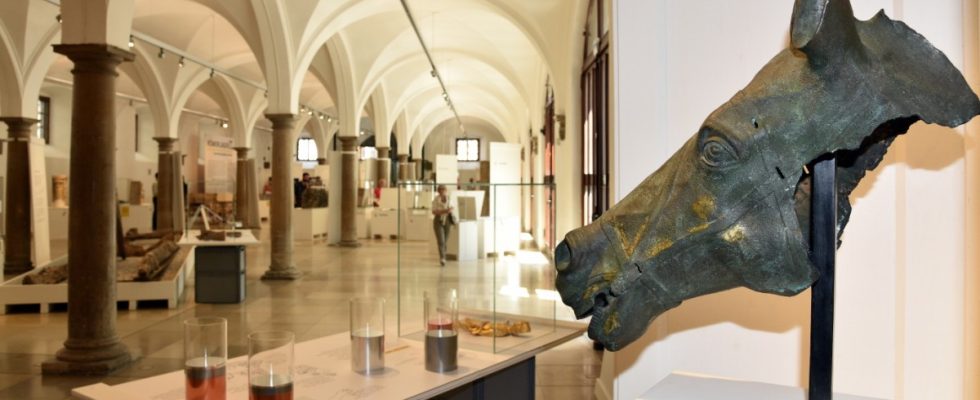The choice of words “revival” says it all: the Augsburg Roman Museum is a kind of mummy. It has been lying derelict for eleven years, the house has been closed since massive problems suddenly arose with the statics of its location in the Dominican Church. The Roman Museum’s holdings contain priceless treasures. Neither the poorly furnished interim quarters nor the idea of making the treasure visible via an app do them justice. Now Bavaria’s Art Minister Markus Blume and the city of Augsburg announced the patient’s resuscitation.
The minister seeks salvation in merging the institution of the Roman Museum with the State Archaeological Collection, which already has several branches. Their main building in Munich is also currently closed and is scheduled to reopen in 2024 after ten years of renovation – but that is only mentioned in passing. “I am an enthusiastic fan of a cooperation between the Augsburg Roman Museum and the Archaeological State Collection – through a joint museum operation, Augsburg’s Roman cultural treasures can be presented to everyone in a contemporary way,” says Blume. The historical heritage of the Roman city of Augsburg offers “the best breeding ground for making our Roman heritage an exciting experience.”
Markus Blume (Art Minister), Andreas Jäckel (MdL) and Leo Dietz (MdL) advocate for the Augsburg Roman Museum.
(Photo: StMWK)
Augsburg’s cultural advisor Jürgen Enninger says: “It was always clear: we cannot support a Bavarian museum for Roman history using city resources alone. The fact that Augsburg will now receive appropriate visibility as the former largest Roman settlement in Bavaria and the capital of the Roman province is important this rank is taken into account.”
The Augsburg city archaeologist Sebastian Gairhos, who has been fighting for the cause for a long time, said in the South German newspaper once: “Other places would build a museum for just one of our finds.” As examples, he cited the first evidence of Christian ideas in Bavaria, such as a glass bowl with Adam and Eve on the Tree of Knowledge from the year 350 AD. Also noteworthy are 5,500 silver coins that were unearthed from a single construction site a few years ago. For more than 400 years, Augusta Vindelicum was not only the largest settlement in the Roman province of Rhaetia, but also an important trading center.
Now the rich Roman heritage in the Free State is to be made visible with an archaeological state exhibition in 2028. The State Archaeological Collection will also take the lead in designing this. Using objects and virtual reconstruction, she aims to make the splendor of that time tangible. If the political will becomes reality, a permanent solution for a Roman museum in Augsburg can be developed based on this.
Specifically, according to Blume and the city, future collaboration could be imagined as follows: Augsburg is providing the future exhibition building – with the help of funding instruments from the Free State such as monument preservation and money from the Bavarian Cultural Fund. In return, the Free State is considering supporting the museum’s everyday operations via the State Archaeological Collection.

